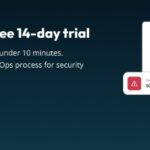The Allison 1000 transmission, renowned for its durability and performance, often requires a relearn procedure after certain repairs or maintenance. This process, typically performed with a scan tool, allows the Transmission Control Module (TCM) to adapt to the specific characteristics of the clutches and other components. But what if you don’t have access to a scan tool? Can an Allison 1000 relearn be done without one? This article explores the possibilities.
Understanding the Allison 1000 Relearn Process
The relearn procedure, often referred to as “Fast Learn,” is crucial for optimal shifting performance. It involves a series of tests in different gear selections (Park, Drive, Reverse) that enable the TCM to gather data on clutch apply and release times, pressures, and volumes. This data is then used to fine-tune shift points, ensuring smooth and efficient gear changes. A scan tool is traditionally used to initiate and monitor this process. The scan tool guides the technician through the steps, ensuring the correct procedures are followed and the required conditions are met.
Why a Scan Tool is Usually Necessary
The scan tool plays a vital role in the Allison 1000 relearn for several reasons:
- Initiation and Control: The scan tool initiates the Fast Learn process and controls the sequence of tests.
- Monitoring Parameters: It monitors crucial parameters such as transmission fluid temperature, throttle position, and engine speed, ensuring they remain within the specified range for accurate learning. These parameters are essential for the relearn procedure to succeed. Deviations can lead to inaccurate data and poor shift quality.
- Data Acquisition and Analysis: The scan tool collects data from the TCM during the tests and analyzes it to determine if the relearn has been successful. It provides feedback to the technician, indicating whether the process needs to be repeated or if further diagnostics are required.
- Troubleshooting: In case of issues, the scan tool can provide diagnostic trouble codes (DTCs) and other information to help pinpoint the problem. This allows for efficient troubleshooting and faster resolution of any underlying issues. Without a scan tool, diagnosing problems becomes significantly more challenging.
Exploring Alternatives: Relearning Without a Scan Tool
While a scan tool is the recommended method for performing an Allison 1000 relearn, some sources suggest alternative methods that may allow the TCM to learn adaptively over time through regular driving. This involves following specific driving patterns and conditions, allowing the TCM to gradually adjust its parameters.
However, it’s crucial to understand that these methods are not officially endorsed by Allison Transmission and may not be as effective or reliable as the scan tool method. They may also take significantly longer for the TCM to fully adapt.
Important Considerations
Whether using a scan tool or attempting alternative methods, ensuring proper conditions is crucial for a successful relearn:
- Fluid Temperature: The transmission fluid must be within the specified temperature range.
- Throttle Position: The throttle should be closed (0% throttle).
- Engine Speed: The engine should be at warm idle RPM.
- No Active DTCs: Any diagnostic trouble codes should be addressed and cleared before attempting a relearn.
Conclusion: The Importance of Professional Assistance
While some adaptive learning might occur without a scan tool, achieving optimal transmission performance and ensuring a complete relearn requires professional assistance with the proper equipment. Using a scan tool is the most reliable and efficient method for performing an Allison 1000 relearn. It ensures accurate data collection, proper monitoring, and effective troubleshooting, ultimately leading to a smoother and more responsive driving experience. If you’ve had work done on your Allison 1000 transmission, consulting a qualified technician with a scan tool is highly recommended.

